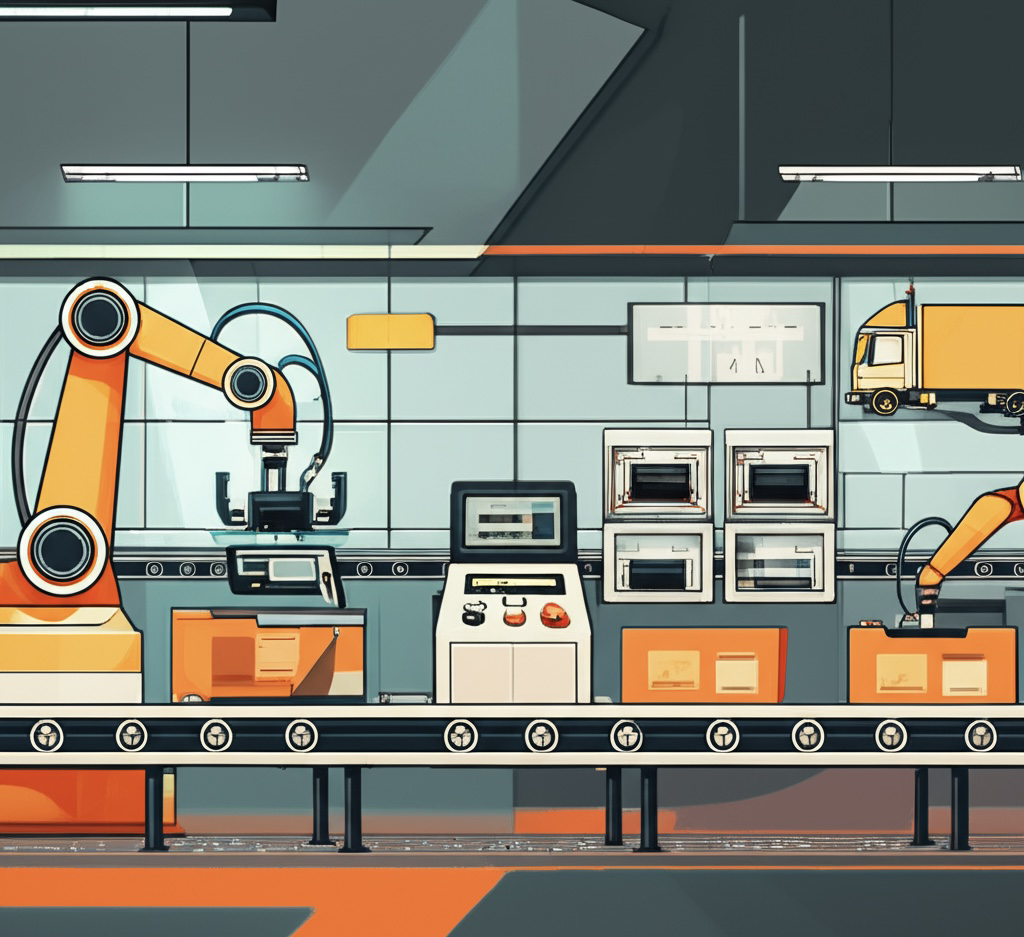
Just-in-Time Manufacturing
Just-in-Time Manufacturing: Streamlining Production for Maximum Efficiency
By: Destiny Dickerson
What is Just-in-Time Manufacturing?
Just-in-time (JIT) manufacturing is a strategy designed to increase efficiency and reduce waste by receiving materials and producing goods only as they are needed. Instead of stockpiling inventory, businesses using JIT aim to synchronize production with real-time customer demand. This system significantly lowers storage costs and enhances flexibility, but requires precision, coordination, and trust among suppliers and production teams.
A Brief History: From Post-War Japan to Global Adoption
The roots of JIT can be traced back to Japan after World War II, when economic recovery necessitated the adoption of resourceful and efficient production methods. Toyota, one of Japan’s most iconic automakers, pioneered JIT through the Toyota Production System. Taiichi Ohno, one of Toyota’s key engineers, helped develop this lean approach by focusing on eliminating all forms of waste, whether excess materials, idle workers, or unnecessary movements. JIT proved highly effective, helping Toyota gain a competitive edge through lower costs and higher quality.
The Key Benefits of JIT
One of the most significant advantages of JIT is the reduction in inventory holding costs. Traditional manufacturing models often involve purchasing raw materials in bulk and storing finished goods until they are sold. This ties up cash and increases the risk of waste, especially if products become obsolete or materials expire.
JIT helps companies avoid these issues by delivering materials just in time for production. Businesses can remain lean, responsive, and adaptive. Additionally, since production is closely aligned with customer demand, companies can quickly shift to new trends without worrying about excess stock.
Real-World Example: VoltEdge Electronics
Take, for example, a fictional company called VoltEdge, which manufactures custom gaming controllers. Instead of ordering thousands of components in advance, VoltEdge maintains close partnerships with local suppliers who deliver parts within 24 hours of receiving an order.
When a customer designs a unique controller online, VoltEdge initiates production immediately, utilizing freshly delivered circuit boards, buttons, and casings. Because they avoid stockpiling, VoltEdge saves on warehouse space and can update its designs frequently based on market feedback. This flexibility gives the company a competitive edge in a niche market.
The Risks and Challenges of JIT
Despite its benefits, JIT can be risky. Because the system relies on the timely delivery of parts and materials, any disruption, such as a transportation delay or supplier issue, can bring production to a standstill. This was evident during the COVID-19 pandemic, when global supply chains were disrupted, and many companies struggled to produce goods promptly.
To offset such risks, some companies are now exploring hybrid models—keeping small emergency inventories of essential components while continuing to rely on JIT for the majority of their production needs.
Why JIT Still Matters Today
Even with its challenges, JIT remains a powerful strategy for businesses looking to stay competitive in fast-paced markets. It encourages a culture of continuous improvement, promotes collaboration, and keeps businesses focused on customer needs. Industries ranging from apparel to electronics to food service now utilize JIT principles to enhance quality, lower costs, and remain agile.
Final Thoughts
Just-in-time manufacturing is more than a method—it’s a mindset. It requires discipline, precision, and trust throughout the supply chain. For companies that can master its complexities, JIT offers a lean, efficient way to thrive in today’s economy. While it may not suit every business, its core principles—reducing waste, improving responsiveness, and enhancing value — will continue to shape the future of manufacturing.
Sources:
- Ohno, T. (1988). Toyota Production System: Beyond Large-Scale Production. Productivity Press.
- Womack, J. P., Jones, D. T., & Roos, D. (1990). The Machine That Changed the World. Free Press.
- Slack, N., Brandon-Jones, A., & Johnston, R. (2020). Operations Management (9th ed.). Pearson Education.
- Monden, Y. (2011). Toyota Production System: An Integrated Approach to Just-In-Time (4th ed.). CRC Press.